Battle of Western Siberia. Peter and Paul operation 1919 of the year
At the first stage
In the middle of August 1919, the troops of the Eastern Front (commander V.A. Olderogge, member of the PBC V.P. Pozern) as part of the 3 and 5 armies (up to 55 thousand bayonets, 6 thousand sabers, 171 gun, 1081 machine gun), pursuing A.V. Kolchak’s retreating troops (57,5 thousand bayonets, around 10 thousand sabers, 239 guns, 766 machine guns), reached r. Tobol. The Soviet 5 army under the command of M. N. Tukhachevsky (about 35 thousand bayonets and sabers, 76 guns, 479 machine guns) was opposed by the white 3 army of General K. V. Sakharov and the Siberian Cossack Corps (about 24 thousand guns and Sabers, 122 guns, 356 machine guns). Against the Soviet 3 army under the command of S. A. Mezheninov (about 26 thousand bayonets and sabers, 95 guns, 602 machine guns) white 1-I and 2-I armies (33,7 thousand bayonets and sabel , 117 guns, 410 machine guns). After regrouping and preparation, the Soviet troops 20 August forced the river. Tobol.
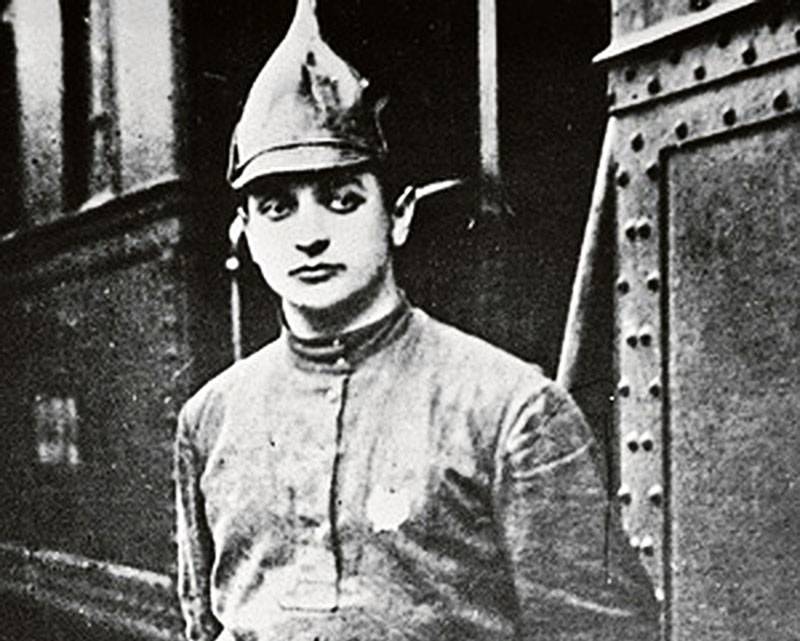
Over the 10 days they managed to advance to 130 - 180 km.
The 5 Army began the battles on the distant approaches (about 70 km) to Petropavlovsk. But on September 2, White put in reserves - by launching a counterattack. Covering blows (3-I army attacked from the south, and 2-I and 1-I armies attacked from the north), they sought, surrounding, to destroy the 5-th army.
And the offensive operation of the Reds became defensive. In September, during the heavy defensive battles, the troops of the 5 Army disrupted the enemy’s plan, inflicting large losses on White (over 15 thousand) and retreating beyond Tobol.
The Soviet 3 Army came to September 14, but October 2 also retreated to its original lines, leaving Tobolsk.
5-I army, having moved beyond the line p. Tobol, took the next defensive position on this river.
The balance of power before the decisive throw
In the area of Art. Zverinogolovskaya (along the path Troitsk - Petropavlovsk), was located 35-division - a total of up to 2100 bayonets, 684 saber, 69 machine guns and 22 guns. The division held bridge positions at the crossing of the Tobol in the area of art. Zverinogolovskaya (defenders of this tete-de-pona were part of the 2-th brigade). 1-I brigade was located north of the left bank on the lake. Lebedevo - dd Bugrovaya - Redutskoe - Berezova.
North of the 35 Division, along the Kamenskaya line - dd Ignashina-Yazeva and Tolsto-Veretinskaya, the defensive positions were taken by the 1 brigade of the 5 division. 3-I, making up the army reserve, occupied the area dd Berezov, and 2-I - Cherkasov - Birds. The division consisted of 3683 bayonets, 196 sabers, 56 machine guns and 14 guns.
Along the line dd M. Sosnovka - Kurgan - Voronova stationed the 26 Division, with a total of up to 3929 bayonets, 114 sabers, 142 machine guns and 28 guns. On the right flank of the division defensive positions along the line d.d. M. Sosnovka - Utyatsky - Barabinskoe occupied the 1-I brigade (two regiments - 228-m and 227-m, while the third regiment, located in the village of Menshchikova, was a brigade reserve). The average combat sector of the division from the mouth of the river. Lebyazhya to the village of Kurgan was defended by the 2-th brigade, and the left sector from the village of Kurgan to the village of Voronov- by the 3-th brigade. The 2 Brigade of the 21 Division, attached to the 26, was its divisional reserve and occupied the area of the d. Shmakovskoe (186 and 187 regiments) - Klepikova - Erokhin (184) - Orlovka (185).
On the left flank of the army in the area d.d. The Beloyarsk-Belozerskoe stationed the 27 Division, which included up to 4653 bayonets, 537 sabers, 169 machine guns and 21 guns. Combat sectors of the division: right - d.d. Beloyarskaya - Paderinskoye, medium - Paderinskoe - Ikovskoe - Kozmina and the left - dd. Kozmina-Belozerskoe, engaged 2-th, 1-th and 3-th teams. On the extreme right flank of the army, the Orsk and Kustanai areas were guarded by the Troitsky fortified area, at the disposal of which were parts of local formations - a total of up to 1864 bayonets, 468 sabers, 33 machine guns and 34 guns. They were located in the area of hut. Poltava, where the enemy did not show active actions, and in the area of p. Lavrentievsky - Dobrynsky (60 km east of the mountains. Kustanaya), where he kept a little more active.
In connection with the departure of the army for the river. Tobol, commander-5 was instructed to take all measures to urgently and maximally replenish the divisions and prepare for the transition to the offensive. Under the guise of p. Tobol should have been made a corresponding regrouping and collected information about the enemy.
Mobilization was announced in Kurgan, Chelyabinsk, Kustanai and Troitsky counties.
Thus, a serf brigade of three serf regiments was formed: the 1 of Chelyabinsk, the 2 of Kazan and the 3 of Perm. These regiments were attached to the 35 division and participated in the development of the Peter and Paul operation. From the rear arrived 54-I Infantry Division as part of 2-x brigades.
By creating new divisions of cavalry regiments assigned to them, a cavalry division was formed from the 65 and 66 cavalry regiments and the cavalry regiment named Stenky Razin.
The combat composition of the army after replenishment was as follows:
5 Division (2 Brigade; Head Karpov; Nashtadiv Gildenbrant) - bayonets - 3342, sabers - 338, machine guns - 48, guns - 14;
26 Division (3 Brigade; Commander Eiche; Nashtadiv Belitsky) - bayonets - 7366, sabers - 20, machine guns - 132, guns - 30;
The 2 Brigade of the 21 Division (2 Brigade) - bayonets - 2572, machine guns - 52; guns - 12;
27 Division (3 Brigade; Head Pavlov; Nashtadiv Sharangovich) - bayonets - 7133; saber - 375; machine guns - 116; guns - 23;
35 Division (2 Brigade; Commander Neumann; Nashtadiv Belogurov) - bayonets - 3406; Sabers - 131, machine guns - 66, guns - 14;
54 Division (2 Brigade; arrived in the rear; Head Kalnin; Nashtadiv Gubanov) - bayonets - 4694, machine guns - 45, guns - 8;
Cavalry Division (3 Regiment; Chief Sokolovsky; Nashtadin Pinko) - Sabers - 2523; machine guns - 38;
2-I Fortress brigade - bayonets - 2800, machine guns - 8;
Trinity fortified area - bayonets - 2214, machine guns - 8, guns - 34.
In total, the army had in its ranks up to 33527 bayonets, 3387 sabers, 513 machine guns, 135 guns, 2 armored trains (“Avenger” and “Red Siberian”).
The location of the 5 Army after the departure of the river. Tobol 1 October 1919
The military actions of the army during the preparatory period were reconnaissance in nature — when periodic attacks on the enemy’s position by capturing prisoners attempted to ascertain the condition, the grouping and the closest intentions of the whites.
Taking advantage of the abroad r. Tobol, the enemy regrouped, brought battered units out of the battle line, replacing them with fresh ones brought up from the rear, reinforced them with reinforcements.
On the site of the 35 division, the Uymanov detachment was part of a separate cavalry division and 4 and 10 divisions of a special purpose, which occupied the line from the lake. Kara-Kamysh on r. Abuga, before its confluence with the Tobol, illuminated the right flank of the division.
Local fights
Scouts of reconnaissance groups were noted along the Bolshak, leading to Petropavlovsk.
More lively activity was observed in the area of the 1 th brigade of the same division in the area of the village Mokhovaya.
So, on October 4, the battalion of the 307 regiment, having crossed the Tobol, occupied the village. Mokhovaya and Borovaya, in 2 km south of Mokhovaya - where it was fixed. The next day, the enemy, with a force of about a hundred Cossacks and three groups of infantry with 4-guns, attacked from different sides on the village of Mokhovaya, forced the battalion to leave this village and retreat to the area of Reduttskoe.
The attempt of the two battalions of the 307 and 309 regiments of the 6 number to take up d. Mokhovaya was not successful - and they had to retreat to their original position.
On the night of October 9, by attacking these two battalions, enemy units were knocked out of dd. Mokhovaya and Bugrovaya, but due to heavy shelling by artillery fire, the village Mokhovaya had to leave and take up positions a kilometer to the west.
10-th number of the enemy, in turn, tried to approach the crossing in the village of Berezov, but was repelled.
The enemy showed even more lively activity in the area of the 5 division. On the morning of October 4, by a detachment in 400, the man he was trying to launch an offensive from d.d. Polusalskaya - Mezhbornaya to the crossing in the area of the village Lebyazhya, but, met with fire, was scattered. The next day, he again attempted to force the river in the area of the village of Glyadinskoe, which also proved to be unsuccessful.
On the 11 number, the enemy launched an offensive (already by a whole battalion of infantry with the support of artillery fire) - on d. Kaminskoe and Razueva, but also unsuccessfully: met with fire, he moved away to the east.
On the site of the 26 division, it also had to repeatedly repel the enemy’s aspirations to force the r. Tobol and take possession of the West Bank (he managed to do this in the area of the village of Barabinskaya). In the evening of October 1, the company of the 227 regiment that was guarding this area, under pressure from the enemy who had crossed the Tobol left bank, was forced to leave the named point. Measures to eliminate this success were taken - but due to the unfavorable terrain conditions in the village of Barabinskaya (located in a hollow with commanders of heights along the eastern shore) and constant strong artillery fire, the 1-th brigade units located here had to leave the named point and move to the west, taking positions on the edge of the forest a kilometer from the village. In the evening of 9, the reconnaissance of the 26 Division, advanced in the direction of the village of Barabinskaya, carried out a successful raid on the village, knocking out the enemy's outpost, but, having been fired, was forced to withdraw to its original position. The same raid was made by two companies of the 227 regiment, with the aim of crossing over to the east bank. But the attempt to master the crossing was not successful.
In the area of the village of Utyatskoye on the evening of 7, the enemy tried, with the support of strong artillery fire, to cross the r. Tobol, but was repelled.
In the afternoon of 9, under the cover of artillery fire, the 50 of enemy infantrymen managed to cross over to the west bank in the village of Predan. They pushed the outposts, but the reserves that came up restored their position.
On the site of the 2 Brigade, two companies of the 230 Regiment and two companies of the 229 Regiment made a raid on the village of Nechaevka. The latter was engaged in a company of the 30 Siberian Rifle Regiment. Bursting into the village, the Reds split a part of the company, and another part (45 people with one officer) was captured. After that, the companies launched an attack on the village of Ilino, which they occupied without a fight. By morning, they returned to their location. Simultaneously with the movement of parts of the 229 regiment on the village of Nechaevka, a company of the 231 regiment and a team of foot reconnaissance made a demonstration at the crossing in the area of the village of Kryukovo-Utyatsky - which caused strong fire from the enemy.
At the site of the 3 Brigade, the battalion of the 233 Regiment, having crossed the Tobol in the area of Smolin, turned the Etkulsky Cossack Foot Regiment, which occupied the indicated point, to flight. In this case, two prisoners were captured. On the divisional division, both sides are characterized by active defense.
In the area of the 27 division, trying to force the river, the enemy brought relatively large forces into battle. Thus, in the evening of the 2, the infantry regiment, concentrating in the village of Peredrgan, tried to cross the Tobol - but without success.
At dawn 6-th, having led an enhanced reconnaissance throughout the division’s division, the enemy in the area of the village of Galkina approached the river with thick chains, but was dispersed.
On the Kustanay and Orsk directions, the activity of the enemy was visible only in the latter direction. On September 30, a white detachment numbering around 500 bayonets attacked the Red partisans who occupied Dobryninsky. The settlement passed from hand to hand several times and remained behind the enemy.
On October 10, after part-hour fighting, the partisan detachment of Logoishny knocked out the white units from the village. Lavrentievsky (having captured prisoners and minor trophies), continuing the attack on Dobryninsky. But in the afternoon, 4 th enemy, with a force up to 6, a man with 600 machine guns, launched a counter-offensive and occupied n. Lavrentyevsky and n. Semenovsky, and then began to attack in the western and south-western directions. The guerrilla detachment of the Logoishny departed to the settlement of Yeriskovsky. The second enemy detachment launched an offensive in a westerly direction to the area in 2 km southeast of the lake. Jantyr Kul.
Developing the offensive in the direction of Kustanai and continuing to push the red partisan units, the enemy occupied Y. Eriskovsky.
The 9 of the infantry detachment of the 1 Troitsky serf regiment, which had arrived to reinforce the partisan detachments operating in the area, Yeriskovsky was again beaten off by the enemy - who retreated to the settlement. Lavrentievsky.
Kustanai and Orsk directions. Troops Fortified Forces on October 10.
Developing a further offensive, units of the partisan battalion and the consolidated cavalry division of the 10 number occupied the settlement. Semenovsky.
The fight against the enemy in this direction was fought red, mainly through the formation of partisan detachments from peasants and Kirghiz, who were in a state of acute hostility with the Cossacks.
To be continued ...
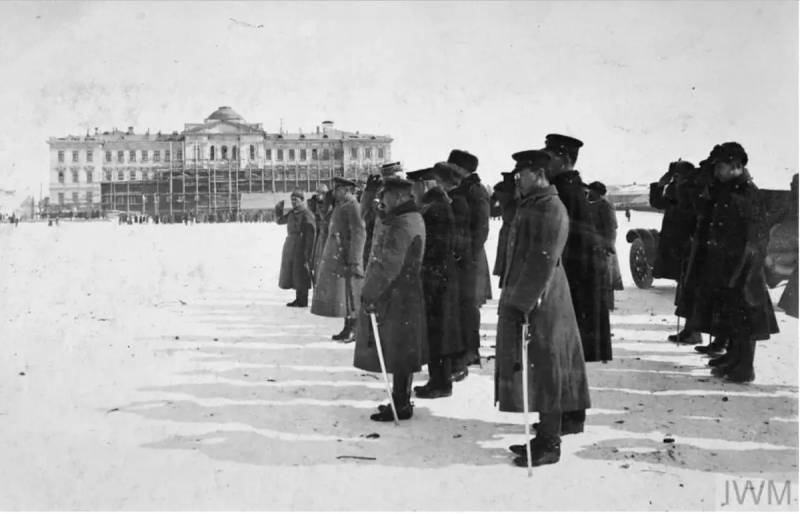
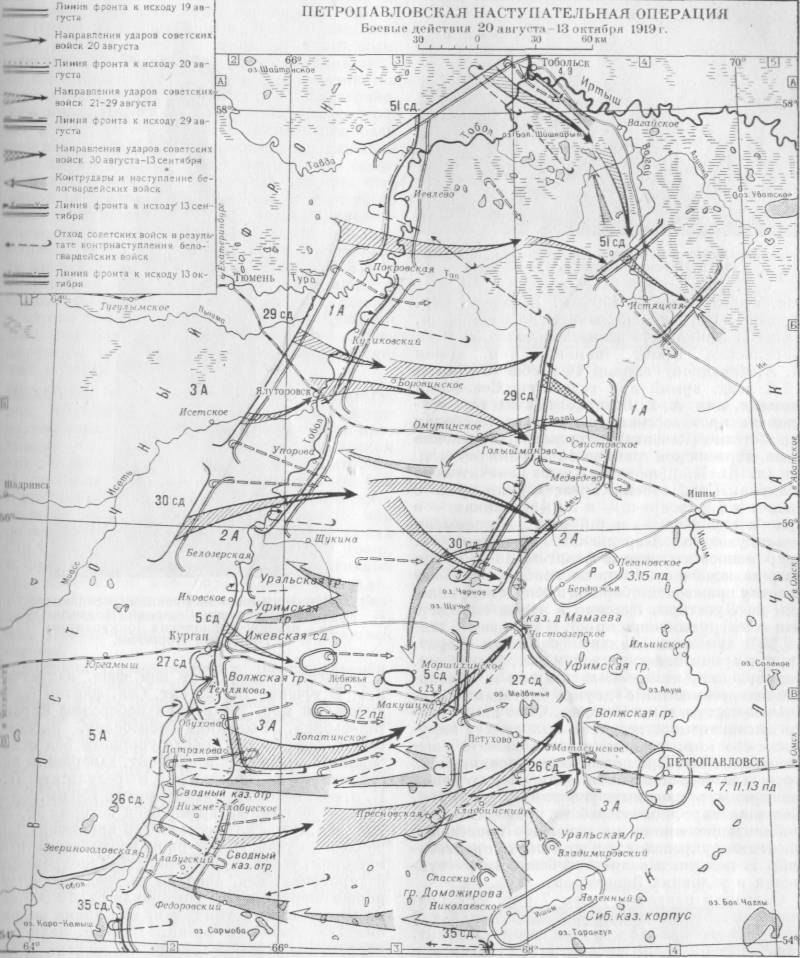
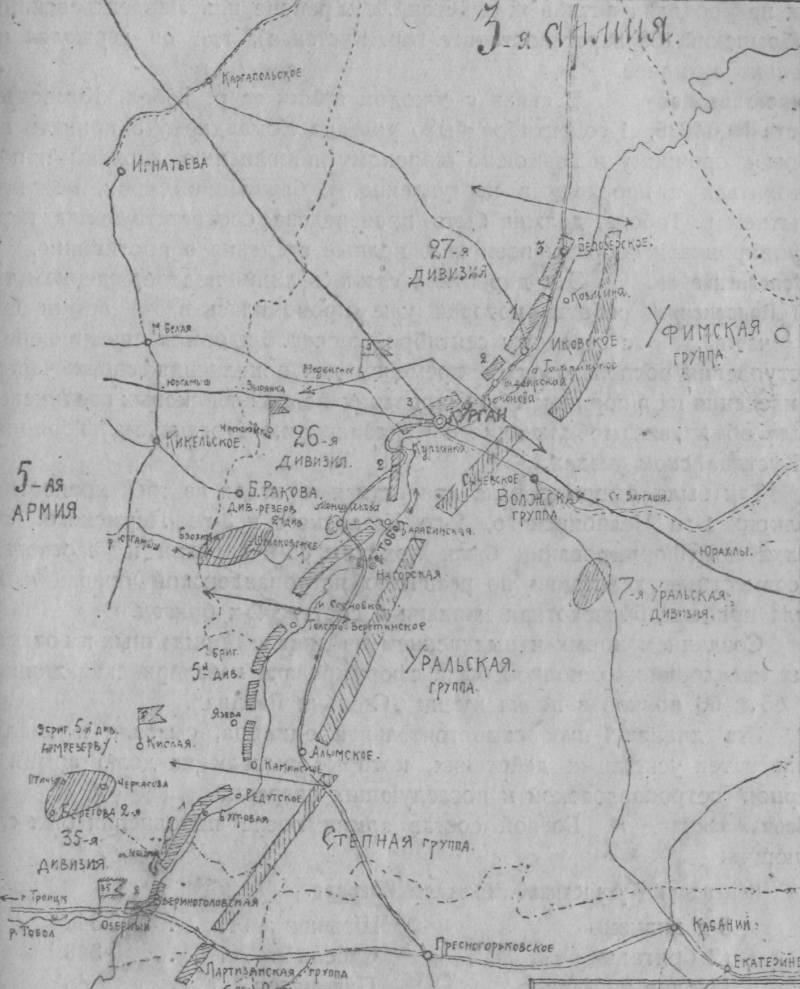
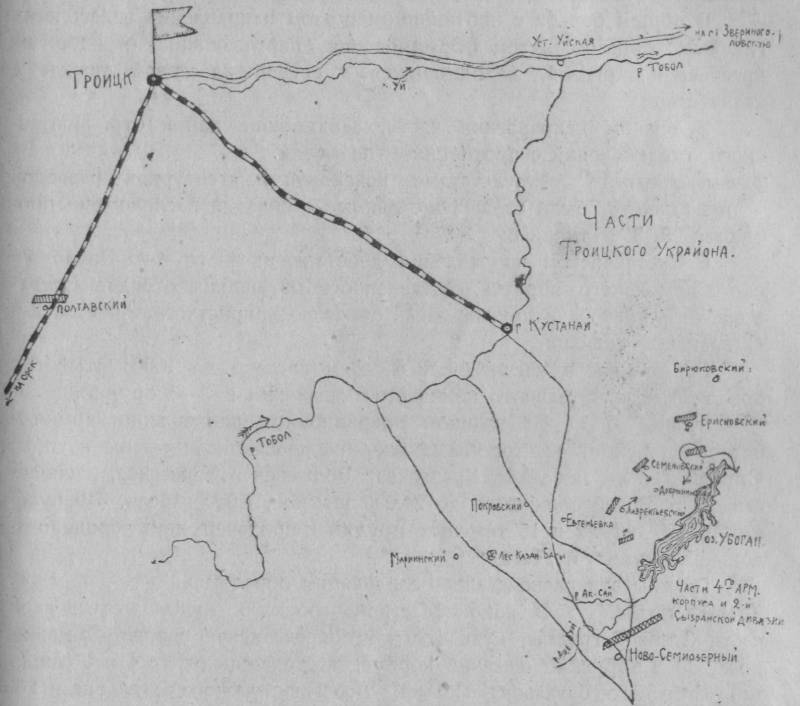
Information